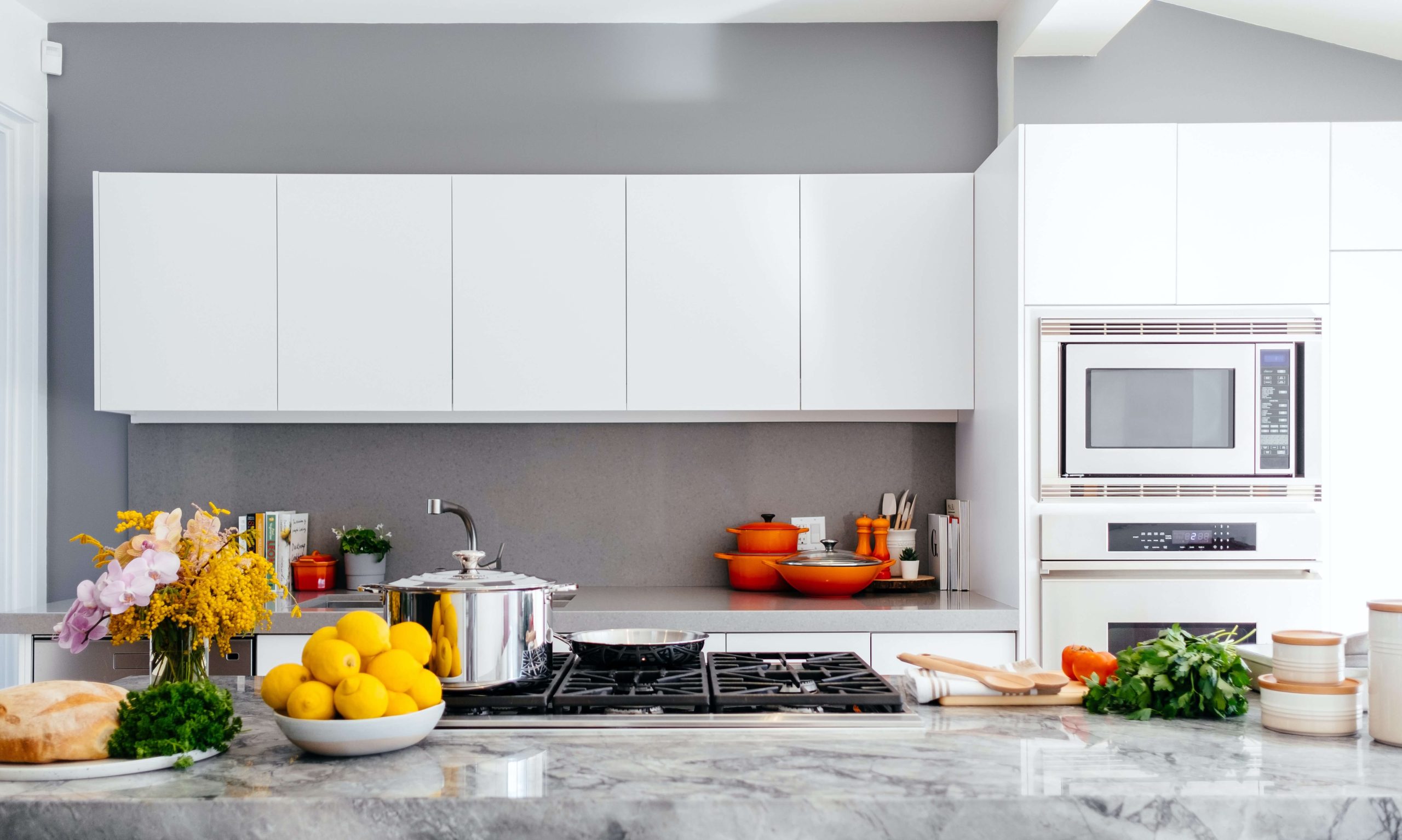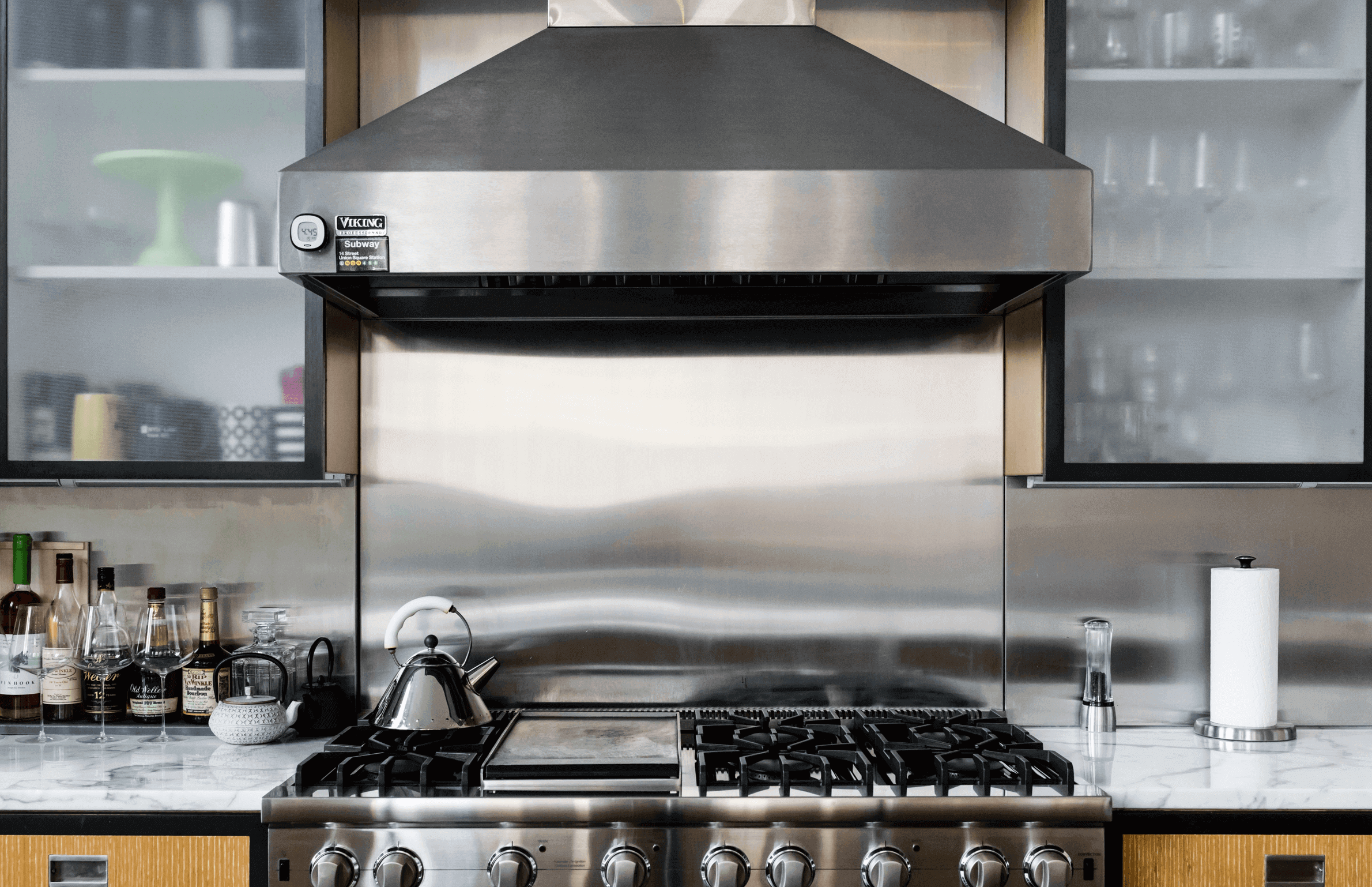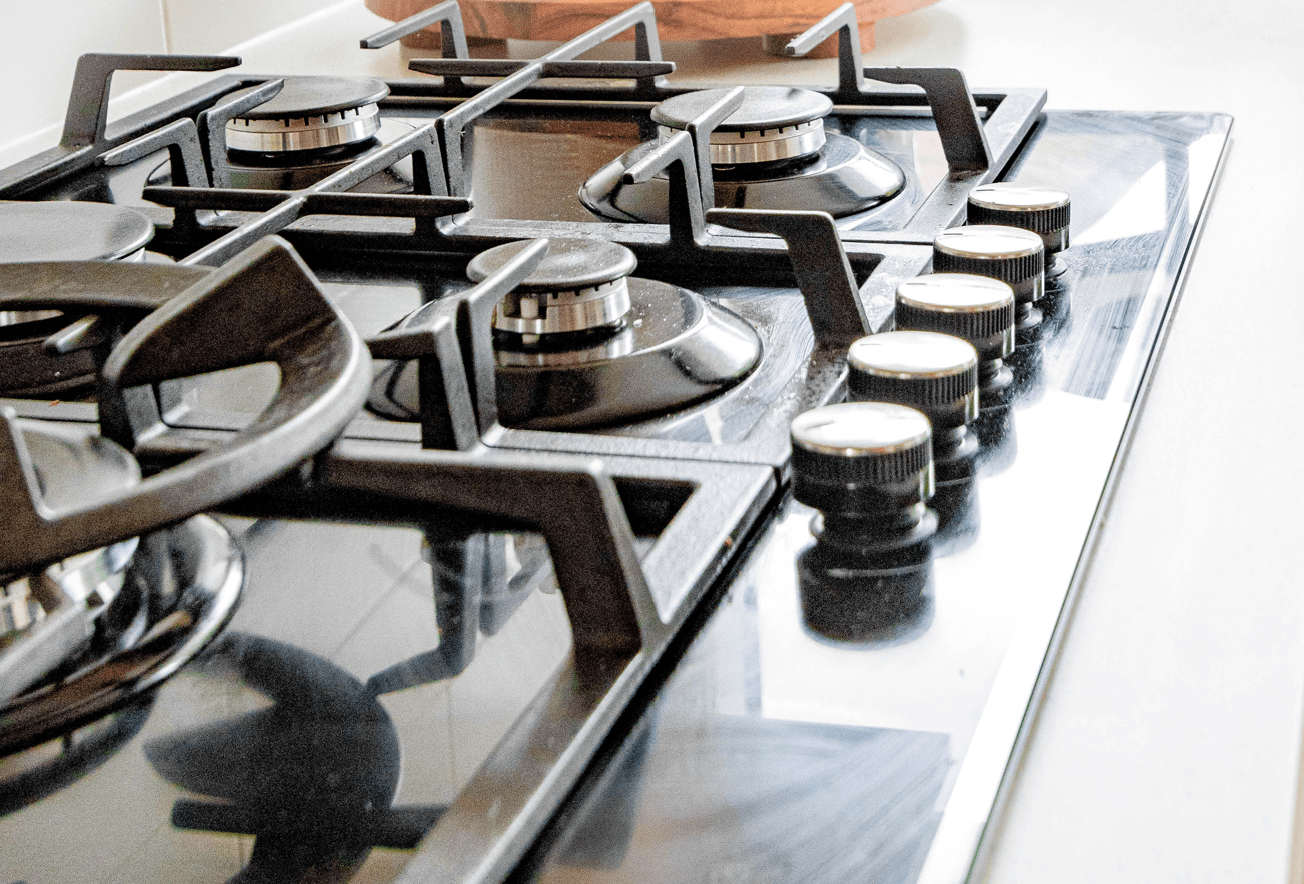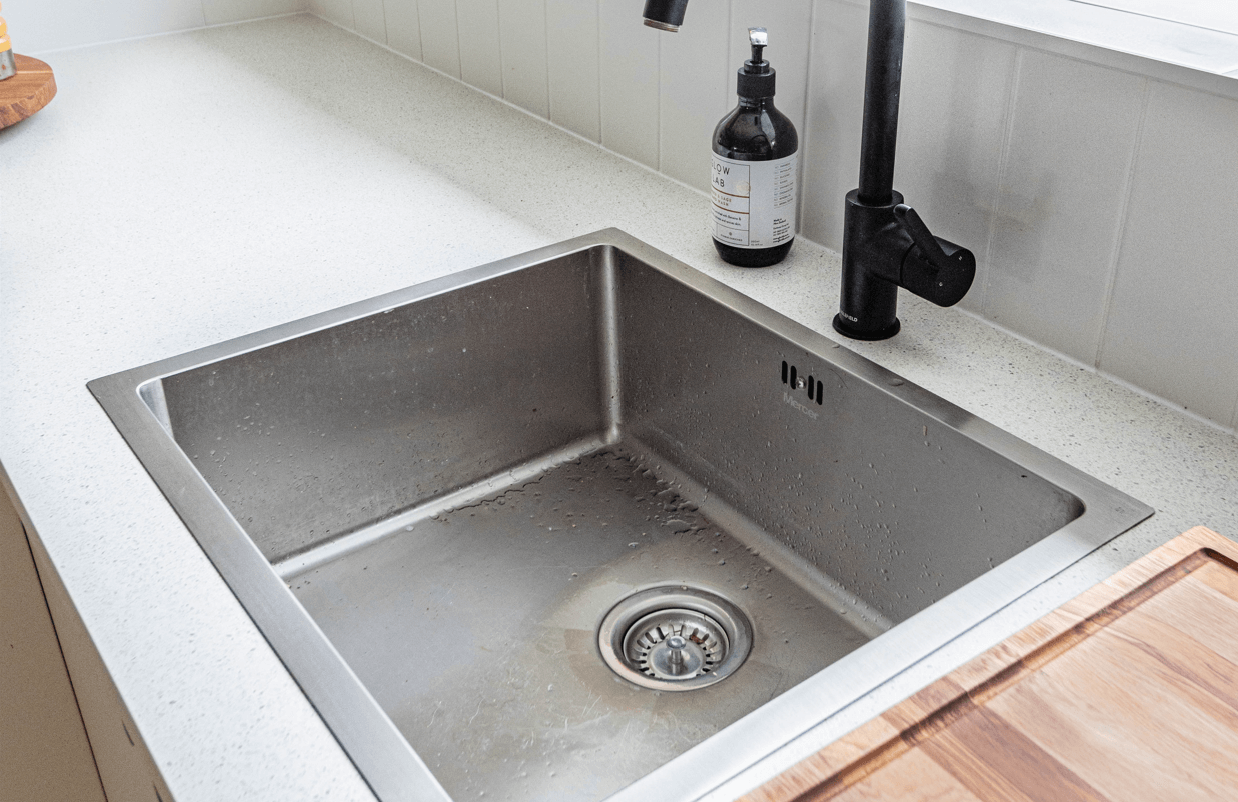
Key Takeaways:
- There are several hard-to-reach parts of the kitchen, such as the backsplash, ceiling fans, corners and crevices, exhaust hood and filters, the grout between tiles, and inside the oven that need to be cleaned regularly.
- Neglecting to clean these hard-to-reach (and commonly overlooked) areas can lead to the accumulation of dirt, grime, and bacteria, and can even become a fire hazard.
- Cleaning solutions such as baking soda and water, degreasers, or a mixture of water and a gentle cleaner can be used to clean these areas.
- Tools such as a vacuum cleaner with a crevice tool or a long-handled scrub brush can help to clean tight spaces.
- Cleaning frequency depends on the location of the area, how easily it gets dirty, and the amount of cooking you do, but a regular cleaning routine is generally recommended to maintain a hygienic cooking space.
Keeping a kitchen clean can be a daunting task, especially when it comes to those hard-to-reach places. From greasy stovetop vents to crumb-filled corners, these areas can easily accumulate dirt, food, and grime over time. However, with a little bit of elbow grease and the right tools, you can easily tackle these tough spots and keep your kitchen looking its best.
In this article, we’ll show you how to clean the hard-to-reach parts of your kitchen, so you can enjoy a spotless and hygienic cooking space.
Which areas are the hardest to clean?
Backsplash behind stove and sink
The backsplash behind the stove and sink is an important area of the kitchen to keep clean, as it can easily become stained from food spills and grease splatters.
To clean the backsplash, the first step is to remove any loose food debris and wipe down the surface with a damp cloth. For stubborn stains, use a mixture of baking soda and water, or a mild cleaning solution specifically designed for backsplashes. Scrub the surface with a soft brush, then rinse with water and dry with a clean cloth.
Aim to make wiping down the backsplash a nightly task, after you’ve finished cooking and eating dinner. That way you can tackle it early and stop the accumulation of food and grease.
Ceiling fans
Ceiling fans in the kitchen can easily accumulate dust, grease, and debris, making them a prime location for bacteria and mould to grow.
To clean ceiling fans in the kitchen, turn off the power and remove any light bulbs or fixtures attached to the fan. Then, use a soft cloth or a duster to remove any loose dust and debris.
Next, prepare a cleaning solution that is safe for the material of the fan, or a mixture of water and a gentle cleaner. Dip a cloth into the cleaning solution and wring it out, then use the cloth to wipe down the blades of the fan.
This is a job that you might want to consider doing monthly or so. If you’re not using the fan often you might find that dust and dirt accumulate quite a lot.
Corners and crevices
The corners and crevices in the kitchen can easily accumulate dirt, grease, and debris, making them a prime location for not only bacteria to live but also to attract pests. Not cleaning these areas can also result in an unsightly buildup of grime and make your kitchen look dirty and cluttered, and ultimately, make it a pretty unhygienic place.
To clean corners and crevices in the kitchen, you will need to use a tool that can reach these tight spaces. A good option is a vacuum cleaner with a crevice tool or a soft brush attachment. Another option is a long-handled scrub brush.
Start by removing any loose dirt and debris, then use a cleaning solution specifically designed for the material of the surface you are cleaning, or a mixture of water and a gentle cleaner. Apply the cleaning solution to the corners and crevices, then scrub with a brush or cloth. Rinse with water and dry with a clean cloth.
The frequency with which you clean these areas will depend on where they are in the kitchen and how easily they get dirty. If you find that it gets messy really easily then consider checking it out and cleaning it out at least once a week.

Exhaust hood and filters
The exhaust hood and filters in your kitchen play an important role in removing smoke, grease, and odours from the kitchen, but they can easily become clogged with grease and debris over time. If not properly maintained, they can become a fire hazard and reduce the efficiency of the exhaust system.
To clean the exhaust hood and filters, turn off the power to the hood and remove the filters. Wash the filters in warm, soapy water, or place them in the dishwasher if they are dishwasher safe.
Then, clean the exhaust hood using a degreaser or a mixture of water and baking soda. Apply the cleaning solution to the hood and let it sit for 5-10 minutes, then scrub the surface with a soft brush or cloth. Rinse with water and dry with a clean cloth.
If you cook in your kitchen at least once a day, give your exhaust hood and filters a clean every month or two. If you cook quite a lot, you may need to clean it more regularly.
Grout between tiles
The grout between tiles can easily become stained and discoloured over time, especially in high-traffic areas such as the kitchen. Neglecting the grout can also cause it to become porous, allowing bacteria and mould to grow. Which means it will need to be replaced eventually.
To clean the grout between tiles, remove any loose dirt and debris using a soft brush or a vacuum cleaner. Then, prepare a cleaning solution using a mixture of water and a grout cleaner, or a mixture of baking soda and water.
Apply the cleaning solution to the grout and let it sit for 5-10 minutes. Scrub the grout with a stiff brush, then rinse with water and dry with a clean cloth. For stubborn stains, you can use a grout scrubber or a toothbrush.
Inside the oven
The inside of the oven can easily become coated with food debris, grease, oil and spills, making it difficult to cook and bake food evenly. Neglecting the oven will not only cause unpleasant odours, but it can even become a fire hazard.
To clean the inside of the oven, remove any loose food debris, such as crumbs and spills, using a spatula or a vacuum cleaner. For a self-cleaning oven, follow the manufacturer’s instructions for using the self-cleaning cycle. For a manual oven, use a commercial oven cleaner specifically designed for this purpose, or make a cleaning solution using a mixture of baking soda and water.
Spray the cleaning solution onto the surface of the oven, then let it sit for 5-10 minutes. Scrub with a soft brush, then rinse with water and dry with a clean cloth. For stubborn grease and food debris, use a scraper or a putty knife to remove as much as possible before cleaning the surface.
If your oven has a baking tray, racks or a drip pan, be sure to remove and clean it as well.
If you want some tips about deep cleaning your oven, check out these ones here.

In between stovetop grates
Cleaning in between stovetop grates can be a challenging task, as food and grease usually collect in the crevices and become difficult to remove. If not cleaned regularly or properly, food and grease can cause discolouration and unsanitary buildup over time.
To clean in between stovetop grates, remove the grates from the stove and place them in a sink or basin. Use a soft brush or a toothbrush to scrub the grates, paying special attention to the crevices and corners. For stubborn food debris and grease, use a mixture of baking soda and water, or a mild cleaning solution.
Rinse the grates with water and dry them completely before placing them back on the stove. If there are any stubborn stains, use a mixture of vinegar and baking soda, or a heavy-duty cleaner designed for stove grates. Scrub the surface with a soft brush, then rinse with water and dry completely before placing the grates back on the stove.
Rangehood
The rangehood can easily become coated with grease and food debris from cooking. Neglecting this area may result in discolouration and unpleasant odours.
To clean the range hood, make sure to first turn off the power to the hood and remove any loose food debris. Wipe down the surface with a damp cloth, then use a mild cleaning solution or a mixture of baking soda and water. Scrub the surface with a soft brush, then rinse with water and dry with a clean cloth.
For stubborn grease and food debris, spray a degreaser onto the surface, then let it sit for 5-10 minutes. Scrub with a soft brush, then rinse with water and dry with a clean cloth.
If your range hood has filters, be sure to remove and clean them regularly as well, as they too can become clogged with grease and food debris and affect the performance of the hood.
Refrigerator and dishwasher
Cleaning the refrigerator and dishwasher are important tasks in maintaining a clean and hygienic kitchen. Failing to keep these appliances clean can cause unpleasant odours and attract pests, as well as reduce their efficiency.
When cleaning the refrigerator, remove all food and shelves, then clean the interior and exterior of the refrigerator with a mild cleaning solution or a mixture of warm water and baking soda. Scrub the surface with a soft brush, then rinse with water and dry with a clean cloth. Be sure to clean all nooks and crannies, including the door seals. Then wash the shelves in a solution of cleaning detergent and water and make sure they are dry before replacing.
To clean the dishwasher, remove any debris from the bottom of the dishwasher, then run it on an empty cycle using a dishwasher cleaner or a mixture of white vinegar and baking soda. For a more thorough cleaning, you can remove and clean the dishwasher’s filters.
Be sure to follow the manufacturer’s instructions for cleaning these appliances, as some materials and surfaces may be more delicate or require special cleaning methods.

Sink drain
The sink drain can become clogged with food debris, grease, and hair, making it difficult to drain water properly and subsequently causing some pretty disgusting smells. Failing to clean the sink drain can also attract pests and harbour bacteria.
To clean the sink drain, first remove any visible debris, such as food particles, using a pair of pliers or tongs. For a mild clog, pour a mixture of hot water and baking soda down the drain, followed by a mixture of white vinegar and hot water. Let the mixture sit for 5-10 minutes, then rinse with hot water.
For a more stubborn clog, use a plumbing snake or a drain cleaning tool. If the clog persists, you may need to disassemble the drain stopper and clean it separately or call in a professional plumber.
Top and behind cabinets and shelves
The top and behind of cabinets and shelves, as well as the top of the refrigerator, are often overlooked during cleaning. As a result, they accumulate dust, cobwebs, and debris over time.
To clean the top and behind of your cabinets and shelves, use a ladder or step stool to reach the area, then dust the area with a soft cloth or a microfiber duster. If there is a buildup of cobwebs, use a vacuum cleaner with a crevice tool or a soft brush attachment to remove them.
Meanwhile, to clean the top of the refrigerator, first, remove any items that may be stored there. Clean the surface with a soft cloth or a microfiber duster, and if necessary, use a mild cleaning solution to remove any spills or stains. Be sure to avoid using water on the surface, as it can damage the finish.
Take care of your kitchen properly
It is important to regularly clean every corner and surface in the kitchen to avoid the accumulation of dirt, grime, and other contaminants that can pose a threat to the health and hygiene of your household. Cleaning the kitchen may seem like a daunting task, but with a bit of determination and the right cleaning methods, even the most challenging areas can be kept sparkling clean.
By following the tips and techniques outlined in this article, you can keep your kitchen looking and feeling fresh and clean, ensuring a safe and healthy environment for cooking and eating. Remember, a little effort goes a long way in keeping your kitchen in top shape.
And if you’re low on time, that’s ok, because here at Pristine Home, we’re here to help. We’re Sydney’s leading professional cleaning team helping people take care of their homes, apartments, buildings and offices throughout Sydney – and when it comes to kitchens, we know what we’re doing. Give us a call on 1300 375 275.

